Do you have a question about the Gigabyte GA-P31-DS3 and is the answer not in the manual?
Safety guidelines and precautions before installing hardware components.
Detailed specifications of the motherboard's hardware components and features.
Step-by-step guide for installing the CPU and its cooler.
Instructions for installing DDR2 memory modules and dual channel configuration.
Procedure for installing expansion cards like graphics or sound cards.
Description of all rear I/O ports and their functions.
Identification and function of internal motherboard headers and connectors.
Screens displayed during the system's Power-On Self-Test (POST).
Overview of the main BIOS setup menu options and navigation.
Configuration of system date, time, and IDE/SATA devices.
Settings for CPU features, boot order, and system performance.
Configuration of onboard devices like SATA, USB, LAN, and Audio.
Settings for ACPI sleep states and power-on options.
Configuration of Plug and Play (PnP) and PCI IRQ assignments.
Monitoring of system temperatures, voltages, and fan speeds.
Advanced settings for CPU clock, memory, and voltages for performance tuning.
Loading the safest, most stable BIOS default settings.
Loading optimal BIOS default settings for peak performance.
Setting passwords to restrict access to BIOS setup and system boot.
Saving BIOS configuration changes and exiting the setup utility.
Exiting BIOS setup without saving any modifications.
Installing essential drivers for the motherboard's chipset and core components.
Information on bundled software applications and utilities provided by Gigabyte.
Overview of the contents of the motherboard driver CD.
Details about the motherboard's hardware components and their configurations.
Contact information for Gigabyte's headquarters and branch offices.
Utility for backing up and restoring system data on PATA/SATA hard drives.
Tools for updating the system BIOS using Q-Flash and @BIOS utilities.
System enhancement utility for overclocking, fan control, and hardware monitoring.
Enabling ReadyBoost to use USB flash drive memory for performance boost.
Setting up audio jacks for 2/4/5.1/7.1 channel configurations and S/PDIF.
Steps to configure multi-channel audio outputs and inputs via the Audio Manager.
Guide for installing the optional S/PDIF In cable for digital audio input.
Steps to set up and use the microphone for audio recording.
Instructions on how to record and play audio files using the Sound Recorder application.
FAQs and a step-by-step procedure to diagnose and resolve system startup issues.
Common questions and answers related to BIOS setup and system behavior.
A flowchart-based guide to identify and solve common system startup problems.
Safety guidelines and precautions before installing hardware components.
Detailed specifications of the motherboard's hardware components and features.
Step-by-step guide for installing the CPU and its cooler.
Instructions for installing DDR2 memory modules and dual channel configuration.
Procedure for installing expansion cards like graphics or sound cards.
Description of all rear I/O ports and their functions.
Identification and function of internal motherboard headers and connectors.
Screens displayed during the system's Power-On Self-Test (POST).
Overview of the main BIOS setup menu options and navigation.
Configuration of system date, time, and IDE/SATA devices.
Settings for CPU features, boot order, and system performance.
Configuration of onboard devices like SATA, USB, LAN, and Audio.
Settings for ACPI sleep states and power-on options.
Configuration of Plug and Play (PnP) and PCI IRQ assignments.
Monitoring of system temperatures, voltages, and fan speeds.
Advanced settings for CPU clock, memory, and voltages for performance tuning.
Loading the safest, most stable BIOS default settings.
Loading optimal BIOS default settings for peak performance.
Setting passwords to restrict access to BIOS setup and system boot.
Saving BIOS configuration changes and exiting the setup utility.
Exiting BIOS setup without saving any modifications.
Installing essential drivers for the motherboard's chipset and core components.
Information on bundled software applications and utilities provided by Gigabyte.
Overview of the contents of the motherboard driver CD.
Details about the motherboard's hardware components and their configurations.
Contact information for Gigabyte's headquarters and branch offices.
Utility for backing up and restoring system data on PATA/SATA hard drives.
Tools for updating the system BIOS using Q-Flash and @BIOS utilities.
System enhancement utility for overclocking, fan control, and hardware monitoring.
Enabling ReadyBoost to use USB flash drive memory for performance boost.
Setting up audio jacks for 2/4/5.1/7.1 channel configurations and S/PDIF.
Steps to configure multi-channel audio outputs and inputs via the Audio Manager.
Guide for installing the optional S/PDIF In cable for digital audio input.
Steps to set up and use the microphone for audio recording.
Instructions on how to record and play audio files using the Sound Recorder application.
FAQs and a step-by-step procedure to diagnose and resolve system startup issues.
Common questions and answers related to BIOS setup and system behavior.
A flowchart-based guide to identify and solve common system startup problems.
| Socket | LGA 775 |
|---|---|
| Form Factor | ATX |
| Memory Slots | 4 |
| Maximum Memory | 4 GB |
| Memory Standard | DDR2 800/667/533 |
| SATA | 4 x SATA 3Gb/s |
| IDE | 1 x IDE |
| USB Ports | 8 x USB 2.0 |
| Audio Chipset | Realtek ALC888 |
| LAN Chipset | Realtek RTL8111B |
| LAN Speed | 10/100/1000 Mbps |
| RAID Support | No |
| Chipset | Intel P31 Express |
| Expansion Slots | 1 x PCI-E x16 3 x PCI-E x1 3 x PCI |
| Back Panel Ports | 1 x PS/2, 1 x LPT, 1 x COM, 1 x DVI, 1 x HDMI, 6 x audio jacks, 1 x RJ-45 |
| Internal I/O Connectors | 1 x 24-pin ATX power, 1 x 4-pin ATX 12V, 1 x floppy, 1 x IDE |
| Supported CPUs | Intel Core 2 Quad, Core 2 Duo |
| Front Side Bus | 1333/1066/800MHz |
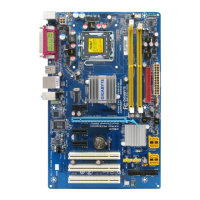
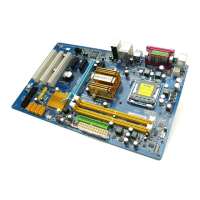
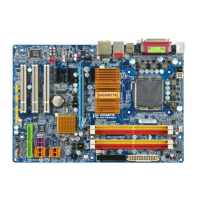
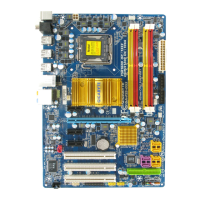


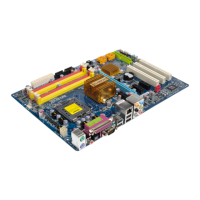

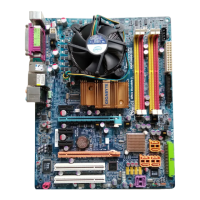
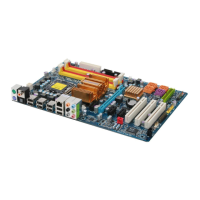

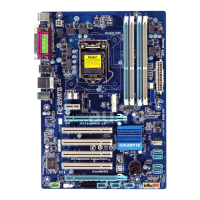
